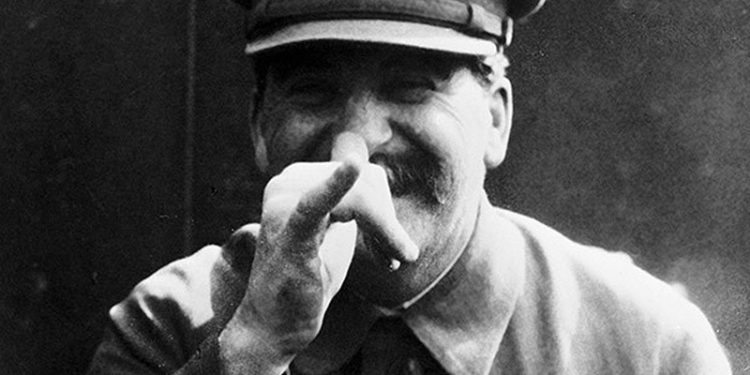Georgia is famous for several things, unique folklore and dance, ancient winemaking, and the centuries-old institution of the Tamada or toastmaster. This country is the birthplace of the first Europeans as well as Zaza Pachulia, the two-time NBA champion. However, for many people Georgia is known in part as the homeland of comrade Stalin.
Who was the Stalin after all? The greatest Georgian? A leader who loved kids? Poet? Dictator? Religious student? The man who won World War 2? A bank robber? The architect of a worker’s paradise on Earth? Well, answers to these and many other similar questions are both yes and no, depending on who the respondent is.
Nevertheless, meteorologist and three-time candidate for the Nobel Peace Prize (yes, really!) are among his titles but these two traits are known by very few people, mostly historians and employees of the Stalin museum in the Georgian city of Gori.
In the 21st century, the Stalin phenomenon remains unique for two nations: Georgia and Russia. While for Russians it is still part of their ideology for us Georgians it is not so clearly defined. Or perhaps I am wrong? His monument from the city center was only removed in 2010 and this was not a simple decision because of real anger among some citizens, and even organized protests by ხ Georgian labor and communist parties. However, his museum is still open and receives tens of thousands of visitors with the number increasing steadily every year. Based on official figures, over 90% of museum visitors are tourists.
In 2017 the museum was visited by 123,000 people and in 2019 the number increased to 170,000. Entry costs 15 Lari (I called to the museum and asked if they had any discounts for students or communist party members, the answer was negative) and the museum will generate up to 3 million Lari in 2020 on ticket sales alone. If we take costs for maintenance, including the dismal salaries for museum employees, this would seem to be one of the most successful businesses in Georgia.
The museum claims a collection of 60,000 artifacts, mostly his personal belongings including his famous pipe, the original village house where he was allegedly born, and the train car he used to travel. But among this collection, you cannot find a list of people that he murdered directly or indirectly, and by conservative assessments this number exceeds twenty million!
In 2008, nationwide surveys in Georgia and Russia, revealed that Stalin was named among the top three most famous persons who ever lived by both Georgian and Russian respondents. I am not sure about Russia, but in Georgia thousands of citizens are still drinking toasts to Stalin to this day.
To be realistic, I see no chance in the foreseeable future to dramatically change this perception. But, if one day the museum disappears, this will certainly contribute to our own “de-Stalinization” process. However, no one from current or future governments would likely dare to demolish the museum, and the only way to get rid of it is to auction it off and invest the money in education and sports facilities instead of the museum. The likely revenue from such a historic site is potentially tens of millions of dollars. As mentioned, the museum is a lucrative business and its collection could generate massive profits in a more populated place, say Moscow.
Personally, I have discussed the opportunity to sell the museum on several occasions with my friends and colleagues, some prominent businessman. Not all of them were supportive of the idea for various reasons, including logistical, political or economic concerns.
As Mike Bloomberg recently said, you can’t manage what you can’t measure. Last November, GORBI did measure the attitudes of adult Georgians towards the abolishment of Stalin’s museum. And the results were disheartening. 75% of respondents either completely or somewhat disagreed with the idea of abolishing the museum, while only 14% were somewhat or completely supportive.
75% is a big number. In this country fewer people believe in one god. I don’t think officials had this data until now (if they read this column), but they certainly have had political instincts that prevent them from moving against the legacy of the “Greatest Georgian”.
Chart 1: Public sentiments towards abolishment of Stalin’s museum (%

Source: GORBI, 2019 November, nationwide surveys in Georgia. (n=1,000 adult respondents)
As a pollster, I looked into the details of this data with the aim of finding some segments of society that are more hopeful. In other words, when we see antagonism towards liberal values we can check differences among age, education and other categories of surveyed respondents. This is what I did with the data, but what I found is that in all cohorts of Georgian society we have more acceptance towards legalization of hard drugs than the abolishment of Stalin’s museum.
Chart 2: Abolishment of Stalin’s museum by age categories (%)

Overall more than two thirds of those surveyed, regardless of their political affiliation, place of residence, age and gender, or education and employment, wishes to keep the museum intact. However, there is some hopeful disagreement among younger and more educated citizens.
The bottom line is that the museum will remain where it is now. No one would even dare to start talks about auctioning it off, and thousands of Georgians will keep drinking to the great tyrant for many years to come. However, things are not completely hopeless. In the meantime we can always triple the price of a museum ticket.
GORBI is an exclusive member of the Gallup International research network and has more than two decades of experience in survey research ( gorbi.com ).
































Discussion about this post